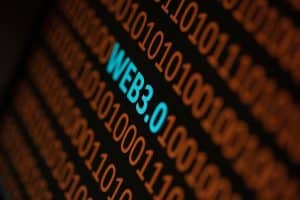What is a Node In Blockchain? – Basics Unveiled

Blockchain nodes are an integral part of the cryptocurrency ecosystem. They are responsible for a wide range of functions within blockchain networks and ensure the networks are secure at all times.
In this article, we are going to look at what nodes are in blockchain, the various types of nodes, how they work, and their use cases in the blockchain ecosystem.
-
-
What are Nodes?
To understand it simply, nodes are intersection points or connections in a telecommunication network. They can also refer to systems or physical equipment connected to a network designed to perform certain tasks, such as creating, receiving, or sending data across a communication channel.
Nodes are technical terms, like Zero-Knowledge Proof, that are important in the blockchain ecosystem. In the crypto world, nodes are computers linked to a cryptocurrency network. They perform certain tasks like producing, receiving and moving data.
Definition and Explanation of Nodes in the Context of Blockchain Technology
What is a blockchain node? This is the first question to help understand what nodes are in the cryptocurrency context. A blockchain node is a device-stakeholder pair that takes part in operating the protocol software of a decentralized network.
Nodes work together to establish the governing structure of a blockchain. Their basic function is to ensure the consensus of a public ledger while also validating transactions. Furthermore, nodes monitor live activities on a blockchain to ensure security.
Blockchain nodes serve as the moderators that establish the infrastructure of a decentralized network. They make up blockchain networks. They are computer systems that contain a copy of a blockchain protocol and its transaction history.
Thanks to decentralization, any individual or entity can run a node from any part of the world. The basic requirement is to stay connected to a decentralized blockchain network and have access to the required resources. The best day trading apps allow you to trade cryptocurrencies and enjoy the benefits of blockchain technology.
The Fundamental Role of Nodes in Maintaining the Blockchain Network
What is a node in blockchain? The primary role of nodes in a blockchain is to broadcast and validate transactions. When users submit transactions, nodes receive them and broadcast them to the rest of the network.
The nodes within the network check the transaction to ensure that the sender has the funds available before authorizing a transaction.
Nodes verifying transactions help secure the blockchain network. A transaction is considered invalid if 51% of the nodes confirm it to be so. In a decentralized blockchain network like Bitcoin, it is extremely tough for a bad actor to take over 51% of the network.
We can classify blockchain nodes based on their availability. Nodes that are always available are called online nodes. They send updates all across the network consistently and are always online.
Meanwhile, offline nodes will have to download the most recent copy of the blockchain ledger whenever they rejoin the network to stay in sync with the other nodes.
Although a single node can operate a complete blockchain network, it is extremely dangerous since everything remains on a single device. This makes the network vulnerable to vices such as power outages, hackers, and system malfunctions. The more nodes a blockchain network has, the more secure it is.
In the event of numerous nodes failing, it takes a single node with the entire blockchain history to back up and restore access to all available data.
Your capital is at risk.
Node Types
Now that we know what is a node in blockchain technology, let us look at the various node types. There are numerous types of blockchain nodes. We will explore them and their functions within the ecosystem.
Overview of Different Types of Nodes in a Blockchain Network (e.g., Full Nodes, Light Nodes, Mining Nodes)
There are at least three major types of nodes. Let us look at them and their features.
- Full Nodes
Full nodes are very important to the blockchain ecosystem. They help maintain a complete copy of the blockchain ledger. Full nodes download and store a copy of every transaction and block on a blockchain network, allowing them to verify the entire network history independently. Full nodes are at the heart of the blockchain network and are crucial for maintaining its integrity.
Full nodes operate in a peer-to-peer network, just like in a blockchain network. This means that they communicate with other nodes to ensure that the blockchain is accurate and up to date.
- Light Nodes
The second type of node is the light node. Light nodes are also referred to as SPV (Simplified Payment Verification) because they are a lightweight version of the full nodes.
Light nodes operate on devices with limited storage and processing power (usually tablets and smartphones). Unlike the full nodes, light nodes don’t download the entire blockchain but only a small portion of it that contains relevant data to their transactions.
In the blockchain context, light nodes rely on full nodes to validate transactions and verify blocks. The nodes communicate with full nodes within a blockchain network to gain access to the data they need to verify transactions.
Due to their limited usage, light nodes are faster and more efficient than full nodes. However, they are less secure and also rely on full nodes for transaction validation.
- Miner Nodes
The third type of node is the miner node. These nodes help verify transactions and add new blocks to the blockchain. In a proof of work consensus, miner nodes execute complex calculations to solve mathematical problems, allowing them to create new blocks and receive rewards in the form of coins or tokens.
To operate a miner node, you will need special hardware and software. The hardware and software help perform calculations necessary for cloud mining. Large mining pools or individuals with resources to invest in the necessary equipment usually run miner nodes.
- Validator nodes
Validator nodes are similar to miner nodes but operate in a proof-of-stake consensus. By partaking in a consensus, validator nodes verify, vote, and maintain a record of transactions on a blockchain network.
Although they are similar to full nodes, validator nodes are un by a pre-set number of validators responsible for validating transactions. The nodes underpin the security of a proof-of-stake blockchain.
The Distinct Functions and Responsibilities of Each Node Type
Here are the functions and responsibilities of the various types of nodes;
Full Node
- It stores a full copy of the network’s public ledger.
- They provide a copy of the chain to new nodes.
- They validate transactions on the blockchain.
- Full nodes eliminate vices such as double-spending or invalid signatures.
- They add transaction blocks to the blockchain.
- Full nodes maintain the integrity and security of a blockchain network.
Miner Nodes
- They verify transactions and add them to the blockchain on a PoW blockchain.
- Miner nodes execute complex calculations to solve mathematical problems.
- They create new blocks and add them to the blockchain.
Validator Nodes
- These are similar to miner nodes but operate on proof-of-stake networks.
- They validate transactions and create new blocks.
- Validator nodes, like miners, receive rewards for creating blocks.
Light Nodes
- They do not store the entire blockchain history.
- Light nodes download block headers, allowing them to use only the part of transactions that interests them.
- Light nodes don’t require as much storage capacity as the other node types.
Your capital is at risk.
Node Operations
What is a node in blockchain? We have answered that question already. However, while we know what blockchain nodes are and the various types, we still don’t know how they operate. In this chapter, we will look at the blockchain node’s core operations.
Explanation of the Core Operations Performed by Nodes (e.g., Validating Transactions, Reaching Consensus)
The blockchain node handles a wide range of operations. Some of these operations include
- Processes transactions
Blockchain nodes are primarily responsible for processing transactions on a blockchain network. Transactions on a blockchain network are transmitted to nodes in the network. The nodes participate in the network’s consensus algorithm to validate the transactions.
The nodes are responsible for receiving a transaction, accepting or rejecting it, recording the data, and returning it to the peers. The node could be required to share the transaction data with other nodes to maintain synchronization. This ensures that the blockchain keeps track of transactions.
- Maintaining a Blockchain Network
Blockchain networks are decentralized, which means that there are no centralized servers where databases can be stored. Although they are decentralized, blockchain networks need storage space to keep all the data. This is the function of blockchain nodes.
Blockchain networks store their data on several thousand nodes across the globe. The nodes preserve their copy of the blockchain and keep synching them with the addition of new blocks.
Although nodes ensure the security of blockchain networks, investors have to do their part and avoid rug-pull projects.
- Accessing information
Nodes ensures users continue to have unlimited and unrestricted access to the blockchain ledger. Decentralized networks are transparent, allowing users to access all information without restrictions.
To achieve this, users need to directly or indirectly interact with the nodes. With decentralized networks, users don’t require permission to access the information on a blockchain ledger.
When you access the blockchain ledger via a third-party blockchain explorer, such as Etherscan, you are communicating with the blockchain nodes to access the network’s data.
The block explorer serves as the interface connecting you to a node, allowing you to read data from it.
The Role of Nodes in Processing and Verifying Transactions on the Blockchain
Nodes are at the heart of the blockchain network. Their primary function is to verify transactions and maintain the accuracy of the public ledgers. When transactions are carried out on the blockchain, they are broadcast to all nodes within the network.
Each node then verifies the transactions using complex algorithms. Once a consensus is reached amongst the nodes, the transaction is completed and added to the blockchain.
In addition to that, nodes store a copy of the blockchain ledger. The ledger includes the history of all transactions that took place on the network. The storage ensures that the blockchain is transparent and all participants have access to the same data. By storing a copy of the blockchain on multiple nodes, the network’s security becomes more robust and is less prone to malicious attacks.
An important function of nodes in blockchain technology is that they ensure a network’s decentralization. With decentralization, no single entity or group controls the network. Rather, the network comprises nodes distributed across the globe.
Decentralization ensures that no single point of failure can affect the network’s security. Hence, making blockchain networks highly resistant to attacks and manipulation.
Consensus Mechanisms
Consensus mechanisms are protocols that bring nodes of a blockchain network into an agreement on a single data set. In the blockchain ecosystem, consensus mechanisms serve as the verification standard via which transactions are approved.
There are various types of consensus mechanisms, and nodes play a crucial role in virtually all of them.
How Nodes Participate in Consensus Mechanisms (e.g., Proof of Work, Proof of Stake)
Nodes participate in consensus mechanisms in various ways. Here are the ways nodes participate in some of the leading consensus mechanisms.
- Proof-Of-Work
This is one of the most popular consensus mechanisms. The mechanism is used in some leading cryptocurrencies, such as Bitcoin and requires nodes to nodes compete to solve complex mathematical puzzles to create new blocks.
The node that successfully solves the problem gets a reward in the form of new coins. Hence, incentivizing participation in the process. In the PoW mechanism, nodes serve as the protectors of the blockchain. They hold a copy of the entire ledger and validate new transactions while maintaining consensus amongst participants.
- Proof-of-Stake
Another consensus mechanism where nodes are highly useful is the proof-of-stake (PoS) protocol. This is a consensus mechanism where nodes validate transactions and create new blocks.
In the PoS mechanism, nodes stake a portion of their crypto holdings to participate in the validation process. Usually, nodes with more coins at stake have a higher probability of becoming validators on the network.
- Delegated Proof-Of-Stake
This is another consensus mechanism where nodes help validate transactions and create new blocks. In the Delegated Proof-of-Stake (DPoS), there are a limited number of trusted nodes. These nodes are known as delegators or validators and are chosen by the network participants.
The delegators validate transactions and maintain the blockchain. DPoS aims to boost the scalability and efficiency of a blockchain while maintaining security and decentralization.
Understanding How Nodes Contribute to Maintaining Network Security and Integrity
Nodes are an important part of the blockchain security system. When executing transactions in a decentralized system, the only option is to adopt a peer-to-peer system, and the best way to manage the system is via a blockchain network.
With nodes, blockchain networks can validate transactions in a fair way. As the number of operating nodes in a blockchain network increases, its security becomes tighter. Thus making it harder for bad actors to take control of the network.
Nodes also ensure that users and miners (or validators) play by the network’s rules. These features increase the decentralization and security of a blockchain network. From a technical point of view, a large number of nodes spread across unique locations is key to decentralization.
Decentralization and Nodes
One of the major reasons blockchain networks are decentralized is the nodes. Nodes and their nature of operation ensure that blockchain networks maintain their decentralization at all times. Let us look at how nodes help ensure blockchain network decentralization.
The Concept of Decentralization and its Connection to Nodes
One of the most important functions of nodes in blockchain networks is to ensure decentralization. Decentralization implies that no single entity or group controls the network.
Rather, the network comprises nodes distributed across the world. By distributing nodes across the world, there would be no single point of failure to compromise the network’s security. This makes the network highly resistant to attacks and manipulation.
Nodes help power the decentralized nature of blockchains. They enable non-intermediated activities and transactions, making it impossible for a single node or entity to serve as the gatekeeper or censor information on the blockchain.
Blockchain nodes play a huge role in offering Sybil Resistance, censorship resistance, and Byzantine Fault Resistance. Thanks to these advantages, blockchain technology continues to be open to innovation, allowing users to harness the full potential of the technology. With the best paper trading apps, you can enjoy some of the features of decentralization.
How Nodes Contribute to Preventing Single Points of Failure in a Decentralized Network
When using centralized networks, a single point of failure is enough to disrupt the entire system. However, that is not the case with decentralized networks. Decentralized networks distribute information and control across numerous blockchains. This helps eliminate the vulnerability of a single point of failure.
Within a decentralized network, even if some nodes fail or go offline, the network can continue to operate without interruptions. Increasing the nodes within a blockchain network increases the system’s total capacity. This, in turn, decreases the likelihood of failure.
Your capital is at risk.
Node Incentives
So far, we have discussed the importance of nodes within a blockchain ecosystem. However, operating a node is not cheap. In the PoW mechanism, the miner has to purchase computer equipment and software to help them calculate complex mathematical operations.
In the PoS system, validators need to stake a large number of coins before they can participate as node operators within the blockchain. In both scenarios, there is compensation for validating transactions on a network and ensuring the security of the blockchain. The best crypto presales also allow you to expand your investment within the crypto space.
Exploring the Incentives for Individuals or Entities Running Nodes (e.g., Transaction Fees, Rewards)
In the proof-of-work mechanism, node operators (miners) are rewarded with newly minted coins and transaction fees when they validate transactions on the network. Operating a PoW node is quite expensive due to the hardware you need to purchase.
For instance, when mining blocks and approving transactions on the Bitcoin network, the miner is rewarded with newly minted blocks and transaction fees obtained from the transactions they approved.
The incentive model is different from the Proof-of-Stake and the Delegated-Proof-of-Stake mechanisms. In these mechanisms, there are no newly minted coins. Hence, the system incentivizes validators by rewarding them with transaction fees for blocks they approve. That is the major difference between the PoW and PoS incentivization models. Keep in mind that some of the best DeFi projects use the PoS or DPoS mechanisms.
You can set up a crypto wallet to store the coins and tokens you receive as a reward for validating transactions.
The Role of Node Operators in the Sustainability of Blockchain Networks
Nodes serve as the custodians of a blockchain network. They store copies of the public ledger while also storing encrypted data of past transactions. Nodes also execute new blocks for scalable growth.
The algorithmic programming of nodes is to execute transactions using majority consensus. They accept or reject proposals on blockchain networks. Transactions that get authenticated are added to the blockchain, copied and distributed within the network. Meanwhile, unapproved transactions are killed.
Consensus mechanisms make sure nodes remain in sync. Nodes process new blocks in real-time and update all copies of the ledger instantaneously. In reality, nodes reflect the true state of a blockchain network.
Scalability and Node Challenges
One of the major challenges of blockchain networks is scalability. Scalability generally refers to transaction speed. Due to a large number of transaction requests, some transactions are delayed, resulting in scalability issues for the network.
Challenges Related to Node Scalability in Blockchain Networks
In the context of blockchain technology, scalability is an important factor since a network’s size and complexity increase with the addition of new transactions. This implies that scalability issues can spring up when there is a surge in the number of transactions, resulting in lower processing time and higher fees. The recent popularity of Ordinals and NFTs in the Bitcoin network presented scalability challenges to the blockchain.
Despite nodes’ availability, scalability issues persist in numerous blockchain networks. This has led to the development of some solutions that address scalability challenges in blockchain networks. The best NFT apps help you gain access to the market with ease.
Solutions and Innovations Aimed at Addressing Scalability Issues
To address scalability challenges, some developers have come up with certain solutions.
Sharding is a popular Bitcoin solution. Developers proposed a solution that involves the division of transactions into smaller datasets called ‘shards’. The shards can then be processed simultaneously and in parallel. Thus, increasing transaction throughput.
Another solution is the use of layer-2 solutions such as the Lightning Network. This off-chain protocol allows instant, low-cost transactions by establishing payment channels between users. Transactions on the Bitcoin network are routed via the channels without needing confirmation on the Bitcoin blockchain. This results in faster processing times and lower fees.
Some blockchains use other solutions, such as sidechains. Sidechains are separate chains connected to the main blockchain and process transactions faster and more efficiently.
The Future of Nodes
Nodes are very important to the blockchain ecosystem. There have been some developments in this area in recent years. Let us look at them.
Emerging Trends and Developments in the Role of Nodes in Blockchain Technology
Scalability remains one of the many challenges in the blockchain world. Emerging trends in the role of nodes in blockchain technology are addressing scalability challenges.
New solutions are currently in development to overcome scalability issues. The advent of quantum computing technologies is changing how blockchain nodes function. The technologies could make it easier for blockchain nodes to handle larger volumes of data. By handling larger volumes of data, blockchain nodes could be able to solve scalability challenges plaguing blockchain networks.
Anticipated Changes and Improvements in Node Infrastructure and Functionality
What is a node in blockchain technology? We have answered this question in-depth so far. However, we haven’t looked at the possible changes and improvements in node infrastructure and functionality.
Node-as-a-service companies like Node.js have been working on some features that would improve the functionality of nodes. Permission Model is a crucial feature many are working on. This feature aims to enhance the security of networks by providing a mechanism for restricting access to specific resources during transaction execution.
Furthermore, some of the companies are working on Single Executable Apps (SEA). This solution simplifies app deployment and distribution by bundling all necessary files and resources into a single executable binary. With this solution, it would become easier for individuals and entities to deploy blockchain nodes.
Another area we might see changes is interoperability. Companies like Node.js are improving Web Crypto API functions to boost interoperability. The function could make it easier for blockchains to communicate with each other, allowing asset movement from one blockchain to another. You can use the best defi apps to enjoy the decentralized features of several blockchain networks.
What is a Node in Blockchain? – eToro Tutorial
Now that you understand what a node in blockchain is, you can see how important they are to the cryptocurrency system. Although nodes ensure the security of a blockchain network, you have to do your part by only using regulated and reputable platforms when trading cryptocurrencies. eToro is one of the most reputable trading platforms in the world and is also regulated. Here are the simple steps to signing up on eToro:
Step 1: Visit eToro “Join Now” page
Step 2: Choose a username, enter your email address, and set a password.
Step 3: Read the Terms and Conditions, Privacy Policy, and Cookie Policy, and tick the boxes.
Step 4: Click on the ‘Create Account’ button.
Step 5: Check your email inbox and verify your email address.
Note: Only cryptocurrencies eToro customers in the United States will be able to trade on the platform will be Bitcoin, Bitcoin Cash, and Ethereum.
What is a Node in Blockchain? – Conclusion
What is a node in blockchain? This is the main question of this article. Blockchain nodes are at the heart of blockchain networks. They help copy and store transactions on the public ledger while also validating transactions on the blockchain network. There are various types of nodes, and each of them serves their functions within a decentralized ecosystem.
A blockchain node carries out three major operations: processing transactions, maintaining a blockchain network, and allowing other nodes to access information with ease. Node operators within a blockchain network are rewarded with incentives such as trading fees and mining rewards.
Your capital is at risk.
FAQs
What is a node in crypto?
In crypto, a node is an integral part of the blockchain network that helps validate transactions and keeps the network safe.
What does it mean to run a node?
This implies installing a ‘client’ software on your device. The node will download, verify, and propagate new blocks across a blockchain network.
How do I create a node in blockchain?
You can create a node using various resources such as Node.js and BlockDaemon. Visit the platforms that allow users to create nodes, choose the ‘create a node’ option, choose your protocol, select from the various deployment options, and launch your blockchain node.
Are nodes and miners the same?
Miners verify transactions and add blocks to the blockchain while nodes keep a copy of the entire blockchain and relay transactions on a network.
Hassan Maishera
View all posts by Hassan MaisheraHassan is a Nigeria-based financial content creator that has invested in many different blockchain projects, including Bitcoin, Ether, Shiba Inu, Cardano, VeChain and Solana. He currently works as a financial markets and cryptocurrency writer and has contributed to a large number of the leading FX, stock and cryptocurrency blogs in the world, including Coinjournal, Cryptowisser, Decred Magazine, FXempire, and Blokt.
VISIT ETOROYour capital is at risk. Other fees apply. For more information, visit etoro.com/trading/fees.stockapps.com has no intention that any of the information it provides is used for illegal purposes. It is your own personal responsibility to make sure that all age and other relevant requirements are adhered to before registering with a trading, investing or betting operator. Contracts for Difference (“CFDs”) are leveraged products and carry a significant risk of loss to your capital. Please ensure you fully understand the risks and seek independent advice.By continuing to use this website you agree to our terms and conditions and privacy policy.
Trading is risky and you might lose part, or all your capital invested. Information provided is for informational and educational purposes only and does not represent any type of financial advice and/or investment recommendation.
Crypto promotions on this site do not comply with the UK Financial Promotions Regime and is not intended for UK consumers.
© stockapps.com All Rights Reserved 2025







